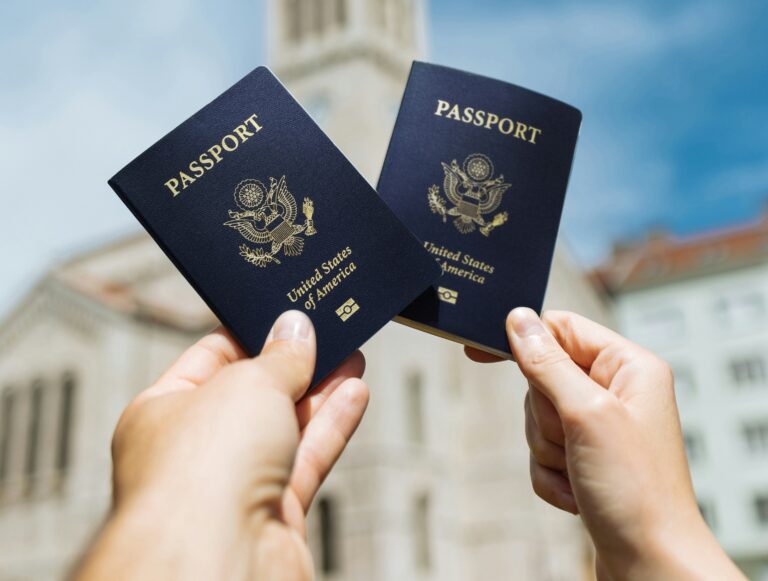For many immigrants seeking a temporary stay in the United States, securing financial support is a crucial step in the immigration process. The U.S. Citizenship and Immigration Services (USCIS) requires a formal declaration of this support through Form I-134, Declaration of Financial Support. This vital document serves as a legal commitment by a sponsor to provide financial support to a beneficiary during their temporary stay in the United States.
According to the official USCIS guidelines, Form I-134 must be filed separately for each beneficiary requiring support. The form has recently been updated, with the latest edition dated 01/20/25. Starting April 3, 2025, USCIS will only accept this newest edition, though prior editions remain acceptable until that cutoff date. When completing the form, it’s essential to verify that the edition date and page numbers are visible at the bottom of all pages and that all pages come from the same form edition to avoid rejection.
Understanding where to file this form is critical for sponsors. Submission locations vary depending on whether the beneficiary is inside or outside the United States and what type of application or petition accompanies the form. The USCIS provides specific instructions with corresponding applications and petitions to guide sponsors through this process.
This comprehensive guide explores everything you need to know about this important document, including its purpose, filing requirements, and key considerations for both sponsors and beneficiaries.
What is Form I-134?
Form I-134, Declaration of Financial Support, is an official USCIS document through which a U.S. citizen, permanent resident, or certain organizations agree to provide financial support to a foreign national during their temporary stay in the United States. The form serves as a legally binding promise that the immigrant will not become dependent on U.S. government assistance.
The form creates what is often called an “affidavit of support,” demonstrating to immigration authorities that the sponsored individual will have adequate financial resources while in the United States.
Who Needs Form I-134?
This form is typically required for:
- Beneficiaries of humanitarian parole programs
- Visitors seeking B-1/B-2 visas in certain circumstances
- Participants in exchange visitor programs
- Applicants for certain temporary visa categories when additional financial evidence is required
Unlike the more permanent Form I-864 (used for family-based green card applications), Form I-134 is designed for temporary stays and specific immigration benefits.
Key Information About Form I-134
- Latest Edition Date
As of April 3, 2025, USCIS will only accept the 01/20/25 edition of Form I-134. Prior to this date, previous editions are also acceptable. Always verify you’re using the current edition by checking the date at the bottom of each page.
- Filing Fee
The filing fee information for Form I-134 can be found on the USCIS Fee Schedule page. Fee amounts may change periodically, so it’s essential to check the current fee before submission.
- Required Documentation
When filing Form I-134, sponsors must include:
- Documentation of sufficient income or financial resources
- Evidence may include:
- Federal income tax returns
- Bank statements
- Investment account statements
- Evidence of property ownership
- Employment verification letters
- Other proof of financial stability
- Where to File
The filing location for Form I-134 depends on:
- Whether the beneficiary is inside or outside the United States
- The type of application or petition the form is being submitted with
Always refer to the specific instructions provided with the corresponding application or petition for detailed submission information.
Responsibilities of the Financial Sponsor
By signing Form I-134, the sponsor commits to:
- Financial responsibility: Providing sufficient support to maintain the beneficiary at or above 125% of the Federal Poverty Guidelines during their stay
- Preventing public charge: Ensuring the beneficiary does not become dependent on government assistance
- Duration commitment: Supporting the beneficiary for the entire duration of their temporary stay
It’s important to understand that this is a significant legal and financial commitment. Sponsors should carefully consider their ability to fulfill these obligations before signing.
Eligibility Requirements for Sponsors
To qualify as a financial sponsor, you must:
- Be a U.S. citizen, U.S. national, lawful permanent resident, or qualifying organization
- Be at least 18 years old
- Have sufficient income or financial resources to support the beneficiary
- File a separate Form I-134 for each beneficiary requiring support (including dependents)
Step-by-Step Guide to Completing Form I-134
Step 1: Download the Current Form
Visit the official USCIS website and download the most recent edition of Form I-134 (currently the 01/20/25 edition).
Step 2: Gather Required Documentation
Collect evidence of your financial resources, including:
- Recent tax returns
- Pay stubs
- Bank statements
- Investment portfolios
- Property ownership documents
Step 3: Complete the Form
Fill out all required fields accurately. The form requires information about:
- The sponsor’s identity and contact information
- The beneficiary’s details
- The sponsor’s employment and financial situation
- The specific support being promised
Step 4: Review and Sign
Carefully review all information for accuracy. Sign the form using your full legal name. Unlike some other legal documents, Form I-134 does not require notarization.
Step 5: Submit the Form
Submit the completed form along with supporting documentation according to the specific filing instructions for the beneficiary’s situation.
Important Filing Tips
- Use the current edition: As of April 3, 2025, only the 01/20/25 edition is acceptable.
- Ensure all pages are present: Make sure all page numbers are visible at the bottom and that all pages are from the same edition.
- Include all required evidence: Attach documentation of sufficient financial resources.
- Provide translations: For any non-English documents, include complete English translations with certification from the translator.
- Sign the form: Unsigned forms will be rejected. The signature must be your full name.
- Follow mailing guidelines: Review USCIS’s Tips for Filing Forms by Mail for proper submission.
Legal Implications of Form I-134
The Declaration of Financial Support is signed under penalty of perjury under U.S. law. This means:
- Providing false information can result in serious legal consequences
- The sponsor is making a legally binding commitment to support the beneficiary
- While not always enforced as strictly as Form I-864, sponsors can still be held accountable for the promises made
Differences Between Form I-134 and Form I-864
Many people confuse Form I-134 with Form I-864 (Affidavit of Support). Here are the key differences:
| Feature | Form I-134 | Form I-864 |
| Purpose | Temporary support | Permanent support (green card cases) |
| Duration | Length of temporary stay | Until the beneficiary becomes a U.S. citizen or works 40 quarters |
| Enforceability | Less strictly enforced | Legally enforceable contract |
| Use cases | Visitor visas, humanitarian parole | Family-based green cards, certain employment-based cases |
Recent Policy Changes Affecting Financial Support Forms
Important Update: As of January 28, 2025, USCIS has announced a pause in accepting Form I-134A, Online Request to be a Supporter and Declaration of Financial Support. This pause is due to the January 20, 2025 Executive Order titled “Securing Our Borders,” which requires a review of all categorical parole processes. This significant policy change affects those planning to use the online version of the financial support declaration. Immigrants and sponsors should closely monitor the USCIS website for updates on when Form I-134A processing will resume and whether any changes will be implemented following the review.
Conclusion
Form I-134, Declaration of Financial Support, plays a vital role in the U.S. immigration system by ensuring that temporary visitors have adequate financial resources during their stay. By understanding the requirements, responsibilities, and process for completing this form, both sponsors and beneficiaries can navigate this aspect of immigration with confidence.
For the most current information and specific guidance related to your situation, always consult the official USCIS website or seek advice from a qualified immigration attorney.






